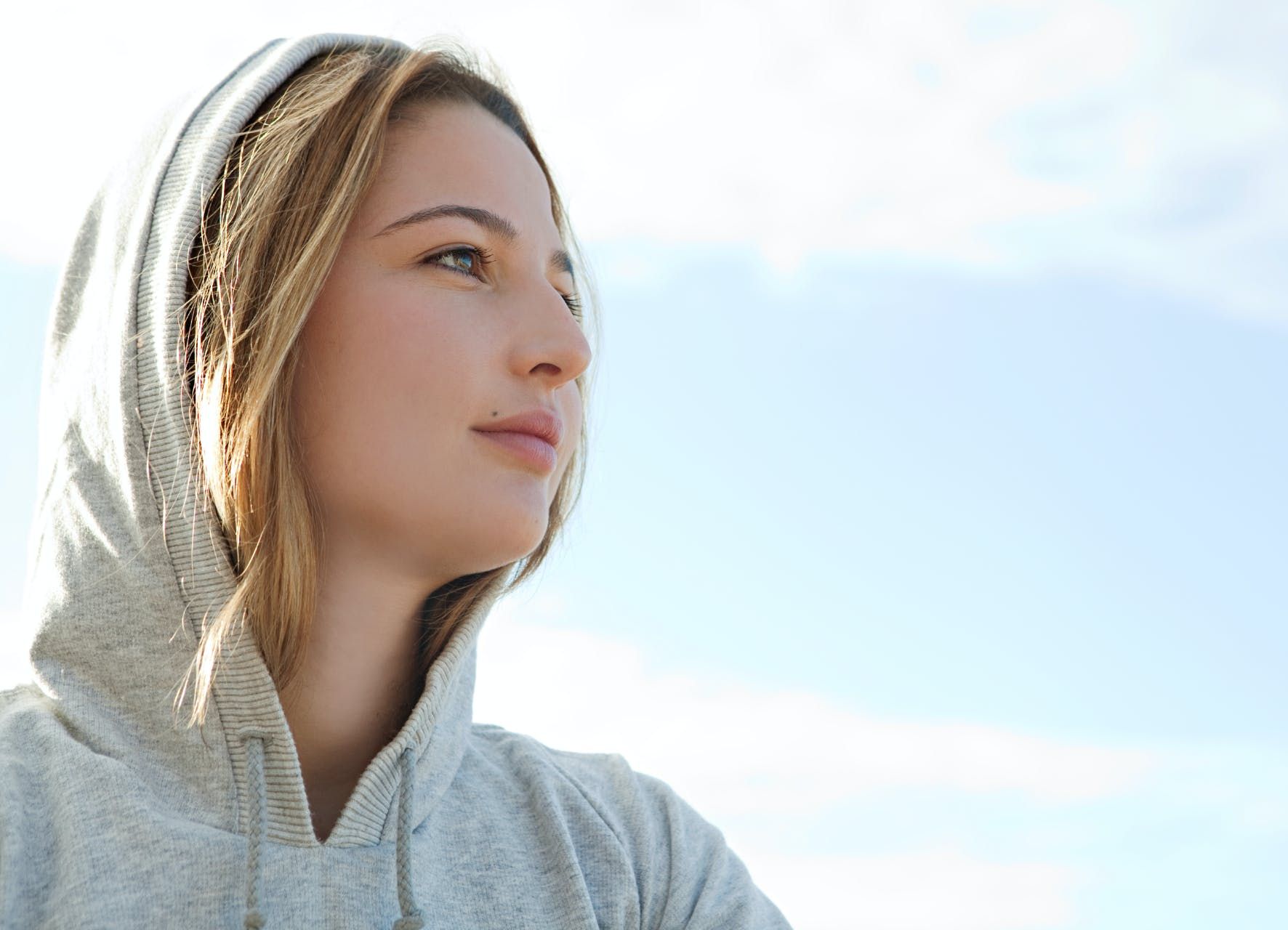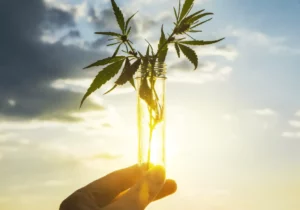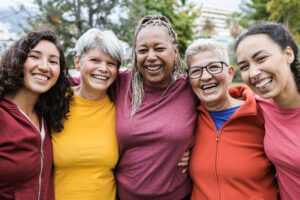Many folks say cannabis helps them feel better. For a while now, cannabis—and namely tetrahydrocannabinol (THC)—has been found to help uplift mood and ease depression.
But sometimes too much THC can lead to people feeling anxious, jittery and even more down—not exactly the effects those suffering from depression are looking for in their medical marijuana.
FOLLOW US ON FACEBOOK & INSTAGRAM
But there’s a way to take cannabis to help relieve depression: microdosing. And guess what? It’s backed by science.
Microdosing 101
Microdosing is the practice of taking the minimal amount of some substance to achieve the effects you want. So, with cannabis, individuals may consume very small amounts of the plant throughout the day to feel happier or to relieve pain.
Because the doses are so low (most people start with 2–3 mg of THC per serving), microdosing allows folks to experience the cannabinoid’s benefits without feeling high.
Many people, including HelloMD co-founder Pamela Hadfield, rely on microdosing to feel better while still being able to function. For Pamela, microdosing cannabis several times a day means she can be fully present for her three kids and help run a business without the debilitating migraines that plagued her for decades. Since she started microdosing cannabis, she’s been migraine-free.
RELATED: MICRODOSING CANNABIS STOPPED MY CHRONIC PAIN
What Does the Science Say About Microdosing Marijuana?
You may be thinking: If some cannabis can help me, wouldn’t more cannabis help me more?
Well, you have to take into account something called the biphasic effect. This phenomenon is when a substance provides benefits until the dose becomes too big. At this point, people start experiencing the opposite of the intended effects.
So, for someone with depression, a little bit of cannabis may help them feel more positive and motivated with higher energy levels. But too much cannabis could result in:
- Paranoia
- Anxiety
- Negative thoughts
Researchers think a too-large dose of cannabis actually shuts off cannabinoid receptors. So, the receptors found throughout the body that are supposed to interact with cannabinoids like THC and cannabidiol (CBD) to bring relief aren’t available anymore.
There have also been some studies that seem to back up the effectiveness of smaller marijuana doses over larger ones. One study from 2013 looked at low doses of vaporized cannabis to relieve neuropathic pain. Subjects were split into three groups:
- One that consumed low doses of cannabis
- Another that took medium doses of marijuana
- A third group given a placebo
Researchers concluded that there was virtually no difference in pain relief between the low- dose and medium-dose groups. So, folks suffering from depression and who are worried about cannabis making their symptoms worse should keep in mind that they can feel better physically and mentally from just a small amount of marijuana.
How to Microdose Cannabis for Depression
When it comes to consuming cannabis for therapeutic purposes, the first step is to figure out exactly what you need it for. Depression can look different to different people, so your goal may be just to feel happier or more relaxed. Or it may be to have the motivation to perform certain tasks, or to socialize outside of the home. Whatever it is for you, having a clear picture of your goal is a good first step.
Then comes a little bit of experimentation. Since cannabis affects everyone differently, the marijuana strains and delivery methods that make your friend feel good may not make you feel the same way.
You can ask friends, family members, even customer service folks where you buy your cannabis products if they can recommend specific cannabis strains and consumption methods. But know that it’ll probably take a period of trial and error to find out what works best for you.
Cannabis Strains You Can Microdose to Help With Depression
In general, THC seems to have antidepressant qualities. Yet, there’s some data that suggest the opposite.
One study from 2018 reviewing self-reported data and published in the Journal of Affective Disorders found that cannabis low in THC and high in CBD seemed to reduce depression symptoms, while patients reported that high-THC/high-CBD cannabis worked best against stress.
Still, most folks suffering from depression report that it’s the THC that helps them the most. A number of cannabis strains rich in THC are available for you to try, including:
- OG Kush, a cannabis strain that helps boost mood and relax the body
- Super Lemon Haze, which has a high percentage of the cannabis terpene limonene, also shown to produce uplifting effects
If you’re a bit nervous about trying high-THC strains, you can opt for a sativa-dominant hybrid strain like:
- Blue Dream,
a well-balanced cannabis strain and a fan favorite that consumers say imparts a calm euphoric feeling - Jillybean, a hybrid marijuana strain with moderate THC content that’s widely reported as having positive effects on mood
RELATED: TOP 5 MARIJUANA STRAINS FOR DEPRESSION
Delivery Methods to Consider When Microdosing Marijuana for Depression
You’ll also want to consider the way in which you consume your cannabis. If you’re not able to or don’t want to smoke, maybe vaping will work best for you. If you’d rather not inhale your cannabis, you may want to try a tincture or edibles, if they’re available to you.
These options are easy to take, delicious and come in small doses, making them a cinch to microdose.
Once you’ve decided on what you want to try, take a very small amount and wait to see how you feel. Make sure you understand the basics of the delivery method you’ve chosen. Smoking or vaping cannabis tends to impart effects almost immediately, so you’ll be able to tell pretty soon after consuming how the cannabis makes you feel.
Meanwhile, tinctures when consumed sublingually (or under the tongue) take about 15–20 minutes to go into effect. This is because the cannabinoids enter the bloodstream via the porous mucus membranes in your mouth.
And edibles take even longer—anywhere from 45 minutes to two hours—because your liver has to process them before the cannabinoids reach your bloodstream. That said, the effects from edibles and tinctures typically last longer than the effects from vaping or smoking cannabis do.
You may want to think about keeping a cannabis diary as you start to experiment with microdosing. It’s hard to always remember what you took, how long you waited before consuming another dose and exactly how it made you feel in the moment. If you take notes on your experience, you’ll have an easier time of making the necessary adjustments in the future.
It goes without saying that you should start with as low a dose as you feel comfortable with. Some people may even only need a milligram or two of THC to feel some benefits. If you’re going with a cannabis edible, you can always cut that gummy or chocolate in half or even into a smaller piece to consume the amount that you want.
One final tip: Keep some CBD on hand as you experiment to find your ideal cannabis microdose. CBD counteracts the effects of THC, so if you find yourself in a situation where you’ve consumed more THC than you wanted to and are starting to feel anxious or paranoid, a dose of CBD can have you feeling calm and relaxed in a matter of minutes.
Photo credit: MJTH/Shutterstock.com
If you’re new to cannabis and want to learn more, take a look at our Cannabis 101 index of articles. And if you have questions about cannabis, ask them and our community will answer.






